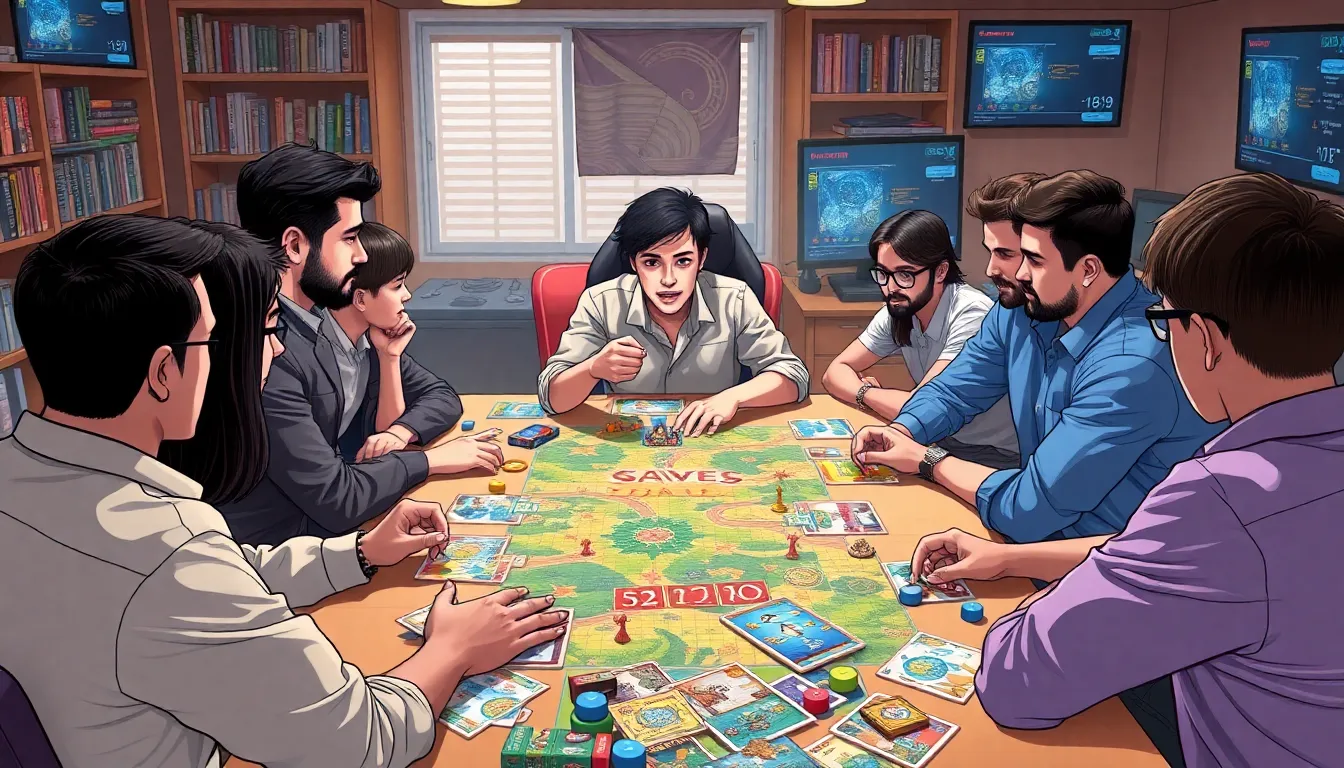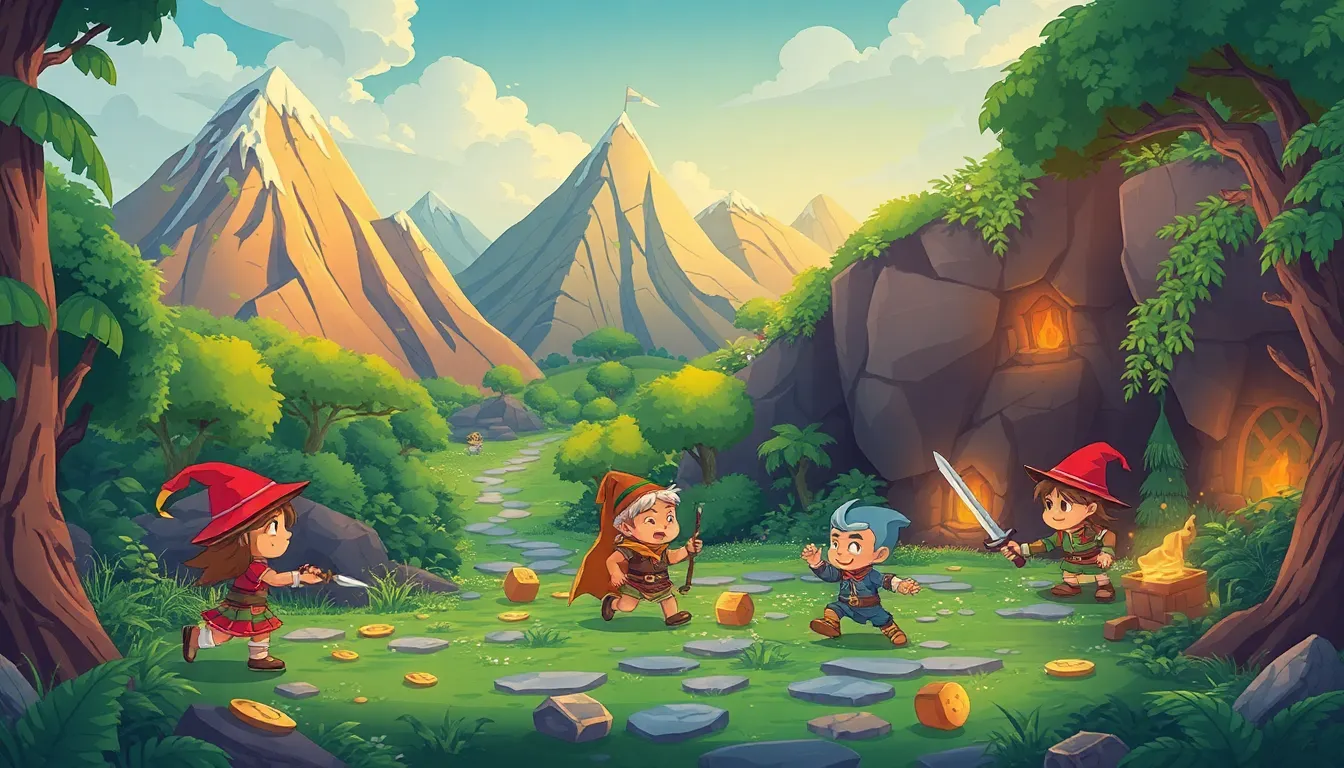In the world of gaming, multiplayer strategy is where friendships are forged and rivalries are born. Picture this: you and your friends huddled around a screen, plotting your next move while trying not to throw the controller out of sheer frustration. It’s not just a game; it’s a battlefield of wits, cunning, and maybe a little bit of luck.
Whether you’re outsmarting opponents in a real-time strategy game or forming alliances in a turn-based epic, multiplayer strategy brings a unique thrill that solo play just can’t match. Players dive into complex tactics, resource management, and the occasional backstabbing—because who doesn’t love a good plot twist? Get ready to explore the art of collaboration, competition, and chaos that makes multiplayer strategy a favorite among gamers everywhere.
Table of Contents
ToggleOverview of Multiplayer Strategy
Multiplayer strategy games combine elements of teamwork and competition, creating a vibrant gaming landscape. Tactical decision-making plays a vital role, where players must assess their situations and opponents’ moves. Effective communication with teammates often leads to more successful strategies, emphasizing the importance of collaboration.
Resource management significantly influences gameplay. Players need to collect, allocate, and utilize resources efficiently to gain advantages. Developing a sound strategy around these resources typically dictates the outcome of matches.
Alliances frequently form between players, offering unique benefits while also introducing strategic dilemmas. Trust and betrayal can drastically alter game dynamics, as alliances may shift throughout the course of play. Unexpected plot twists often arise from these changing relationships, keeping the experience fresh and engaging.
Competitions in multiplayer strategy games frequently pitted against human opponents differ from traditional AI challenges. Human players can think creatively, making unpredictable moves. Recognizing patterns and anticipating behaviors become crucial skills in navigating these environments.
Major multiplayer strategy games often incorporate ranked matchmaking systems. These systems help ensure balanced matchups, allowing players to improve their skills over time. Climbing rankings becomes a motivating factor for many gamers, adding an extra layer of excitement.
Learning from defeats is essential. Failure often reveals weaknesses and offers opportunities for growth and adaptation. Players who analyze their strategies carefully usually develop better tactics for future games.
Key Elements of Multiplayer Strategy

Multiplayer strategy gaming thrives on specific elements that enhance both collaboration and competition. The dynamics between players and their decisions shape the overall experience.
Team Dynamics
Team dynamics play a crucial role in multiplayer strategy games. Communication among team members directly influences tactical execution. Trust among players fosters stronger collaborations, leading to innovative strategies. Conflicts can arise from differing opinions, yet resolving them often strengthens bonds. Some teams utilize designated roles, assigning tasks based on individual strengths. These roles ensure efficiency and streamline gameplay. The formation of alliances creates complex relationships, where deception can shift the balance of power. Understanding group psychology helps players navigate challenges and enhance teamwork.
Resource Management
Resource management is vital for success in multiplayer strategy games. Players must gather resources efficiently to build and sustain their armies. Prioritizing essential resources ensures players can develop strategies without delays. Efficient allocation leads to faster upgrades and improved combat capabilities. Many games introduce constraints on resource availability, forcing players to adapt their tactics. Players often need to balance offensive and defensive investments. Making timely decisions about resource use can significantly impact game progression. Observing opponents’ resource movements opens strategic opportunities for aggressive maneuvers.
Tactical Decision Making
Tactical decision making remains a cornerstone of multiplayer strategy success. Choices made under pressure often determine outcomes of engagements. Players analyze enemy movements to anticipate actions and counter effectively. Utilizing diverse strategies keeps opponents guessing and off balance. Effective planning involves considering both short-term gains and long-term objectives. Adaptability is essential; circumstances can change rapidly in dynamic matches. Developing a keen awareness of timing enhances the ability to strike decisively. Learning from prior matches improves future tactical approaches, leading to progressive mastery of the game.
Popular Multiplayer Strategy Games
Multiplayer strategy games offer diverse experiences that captivate players globally. Each game features unique mechanics that enhance teamwork and competition.
Game 1: Features and Mechanics
StarCraft II stands out with its deep strategic complexity. Players select one of three factions, each presenting distinct advantages. Resource management requires effective gathering and allocation, impacting overall gameplay. Tactical decision-making is crucial, as players can employ diverse unit combinations. Custom maps and competitive matchmaking systems foster a vibrant online scene. Regular updates ensure that balance and player engagement remain priorities for the community.
Game 2: Features and Mechanics
Civilization VI invites players to build and expand their empires through diplomacy and warfare. Players interact with historical leaders, each possessing unique abilities that influence strategy. Turn-based mechanics enable thoughtful planning, allowing players to weigh decisions carefully. City management demands efficient allocation of resources, ensuring growth and stability. Multiplayer options include cooperative and competitive modes, promoting diverse gameplay experiences. The combination of empire-building and tactical engagement keeps players invested.
Game 3: Features and Mechanics
Total War: Warhammer II combines turn-based strategy with real-time tactics. Players command vast armies in epic battles, balancing strategy on the campaign map with tactical prowess on the battlefield. Each faction comes with unique units and abilities, enriching the competitive landscape. Resource management impacts military expansion and diplomacy, affecting alliances and conquests. Online multiplayer modes encourage rivalry and teamwork, enhancing the overall gaming experience. The integration of fantasy elements adds depth and excitement to the gameplay.
Strategies for Success in Multiplayer Games
Effective strategies in multiplayer games hinge on communication, cooperation, and adaptability. Understanding these elements leads to a winning edge in the competitive landscape.
Communication and Cooperation
Successful teams prioritize clear communication. Sharing strategies, resources, and potential threats keeps everyone informed. Players should utilize in-game chat tools or voice communication to enhance understanding. Active listening fosters a collaborative atmosphere, enabling quick decision-making during intense moments. Additionally, establishing roles based on players’ strengths improves efficiency. When team members support each other and share knowledge, they reinforce trust and synergy. Revising strategies based on group feedback creates a dynamic approach to challenges, ensuring adaptability throughout the game.
Adapting to Opponents
Adapting strategies in response to opponents sets skilled players apart. Observing opponents’ tactics reveals patterns and weaknesses to exploit. Reacting quickly to unexpected moves allows teams to counter effectively. Experimenting with various approaches keeps opponents off balance and introduces unpredictability. Flexibility in strategy is crucial, as rigid plans can lead to failure against diverse play styles. Understanding the unique characteristics of each opponent facilitates informed decision-making. Lastly, gathering intelligence about past games can enhance future matches, equipping teams with insights to increase their competitive edge.
Future Trends in Multiplayer Strategy
Emerging technologies continue to shape the landscape of multiplayer strategy games. Artificial intelligence integration promises to enhance matchmaking systems, creating more balanced and competitive environments for players. Data analytics can offer insights into player behaviors, helping developers refine game mechanics and satisfy community needs.
Virtual reality (VR) brings immersive experiences, allowing players to interact with game worlds in unprecedented ways. Players can coordinate strategies while feeling present in the game environment, making communication and teamwork even more vital. Augmented reality (AR) also opens possibilities, enabling real-life elements to blend with gaming strategies.
Cloud gaming technology facilitates accessibility, removing hardware limitations and broadening player bases. Gamers can engage with high-quality titles on various devices, widening the community and enriching multiplayer dynamics. Opportunities for cross-platform play remain pivotal, as players from different devices can unite, boosting player numbers and enhancing matchmaking possibilities.
Esports continues to grow, creating a competitive scene around multiplayer strategy games. Thriving tournaments attract sponsorships and media attention, elevating the profile of strategic gaming. This trend encourages players to improve skills and communities to form around teams, enhancing the collaborative aspect of competitive strategy.
Sustainability in gaming also gains awareness, with developers focusing on eco-friendly practices. Reducing energy consumption and implementing sustainable business models resonates with player values, evolving expectations within the gaming industry. Trends in mobile gaming reflect a shift, as players embrace on-the-go strategies that require quick thinking and adaptability.
These future trends promise to evolve multiplayer strategy gaming, emphasizing collaboration, accessibility, and competitiveness as key growth areas in the coming years.
Multiplayer strategy gaming continues to thrive as a dynamic and engaging platform for players worldwide. The blend of teamwork and competition creates an exhilarating environment that fosters both friendships and rivalries. As players navigate complex tactics and resource management, they not only enhance their skills but also deepen their connections with others.
With emerging technologies shaping the future of gaming, the landscape is set to become even more immersive and accessible. The rise of esports and mobile gaming trends further underscores the growing popularity of multiplayer strategy games. As these games evolve, they promise to deliver richer experiences that challenge players to adapt and collaborate in new ways. The future of multiplayer strategy gaming looks bright and full of potential.




